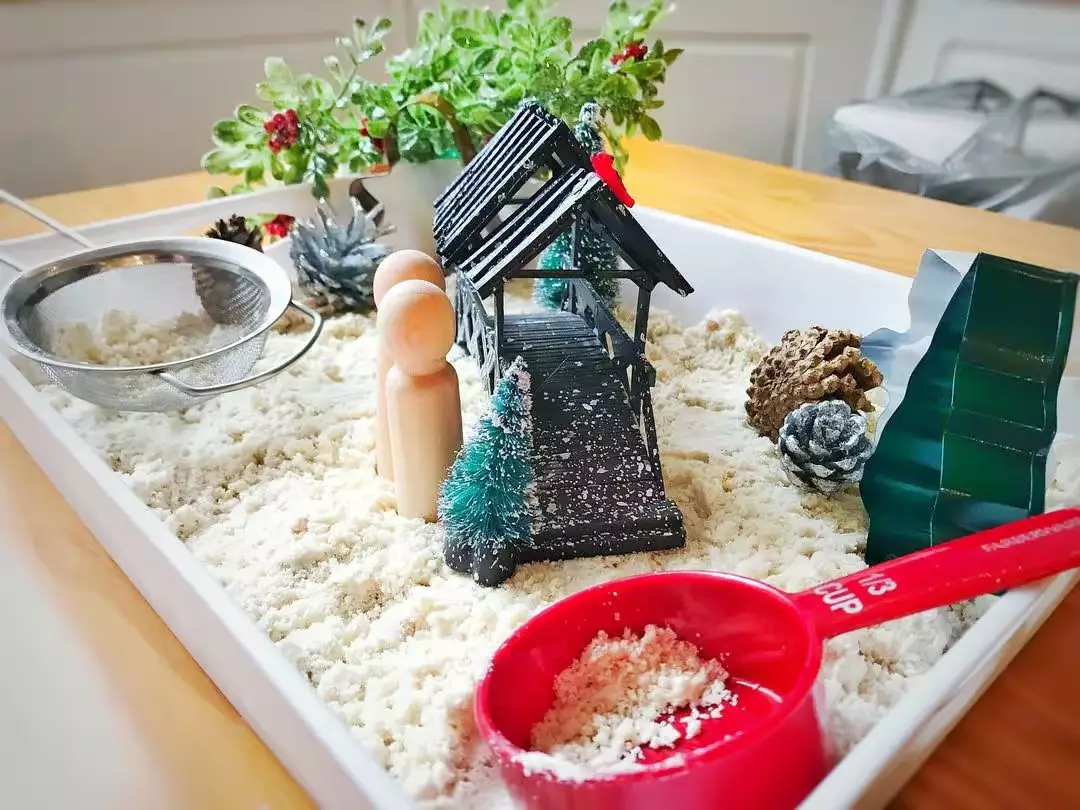The holiday season is a splendid opportunity to infuse joy and learning into our everyday lives, especially for young children. Amidst shifting societal dynamics, the value of experiential learning—a cornerstone of Montessori education—shines brighter than ever. Rather than fostering a passive learning environment, this approach encourages children to engage interactively with their surroundings. With the right guidance, parents can cultivate enriching experiences at home, turning festive occasions into a canvas for education and creativity.
Crafting a Holiday Dough Adventure
One engaging activity involves creating a three-ingredient dough, a delightful and aromatic alternative to conventional play-dough. This simple concoction not only stimulates imaginative play but also promotes fine motor skills crucial during early development. The tactile experience of rolling, squishing, and molding this dough can enhance cognitive growth while aligning with the spirit of the season. Think of festive shapes—a snowman here, a Christmas tree there—as children engage their senses while expanding their creative horizons. The holiday is not merely a break from routine but an invitation to discover and experiment.
Personalized Tree Decorating Fun
Imagine the thrill of having your very own miniature Christmas tree! An artfully designed activity allows children to arrange ornaments, learning about spatial relationships and cause-and-effect as they see their creations come to life. This process not only sparks joy but also fosters decision-making skills as they choose where to place each ornament. By enabling your child to manage their own little celebration, it not only mimics adult behaviors but also instills a sense of responsibility, autonomy, and pride in their work.
Everyday Items as Learning Tools
Engaging toddlers in simple yet innovative ways can be remarkably fulfilling. Consider incorporating everyday household items like bows into playtime for a magical experience. By facilitating an activity where toddlers can stick bows onto a wall using contact paper, parents can offer a safe avenue for creativity while subtly promoting physical coordination and balance. Each squat and stretch provides invaluable body awareness and gross motor skill development. This exercise proves that learning can be ingeniously woven into play, transforming mundane items into instruments of discovery.
Exploring Festive Scents for Language Development
Sensory exploration doesn’t stop at sight and touch; it’s also about smell! Gathering festive scents like crushed peppermint, pine, and cinnamon can lead to an exciting sensory charting experience. By creating sensory jars, children can engage in discussions about what they are smelling, effectively enhancing their vocabulary and cognitive linkage. Older children can even partake in matching exercises, solidifying their understanding through tactile learning. This simple yet profound activity solidifies the idea that learning should involve all senses, making it an exciting journey of discovery.
Interactive Sound and Texture Exploration
Another innovative way to engage infants is through sound and tactile experiences. Filling a Ziplock bag with assorted textures like wrapped paper and jingle bells entices babies to explore by pushing or squeezing. This activity not only boosts sensory awareness but also provides a safe way for infants to experiment with sound and feel under parental supervision. The act of manipulating different materials fosters a sense of curiosity while paving the way for recognizing changes in environment and texture.
The holiday season, laden with opportunities for joy, can become a remarkable time for meaningful learning. By turning ordinary moments into extraordinary experiences, parents can create a joyful atmosphere where children flourish through play, exploration, and creativity.

